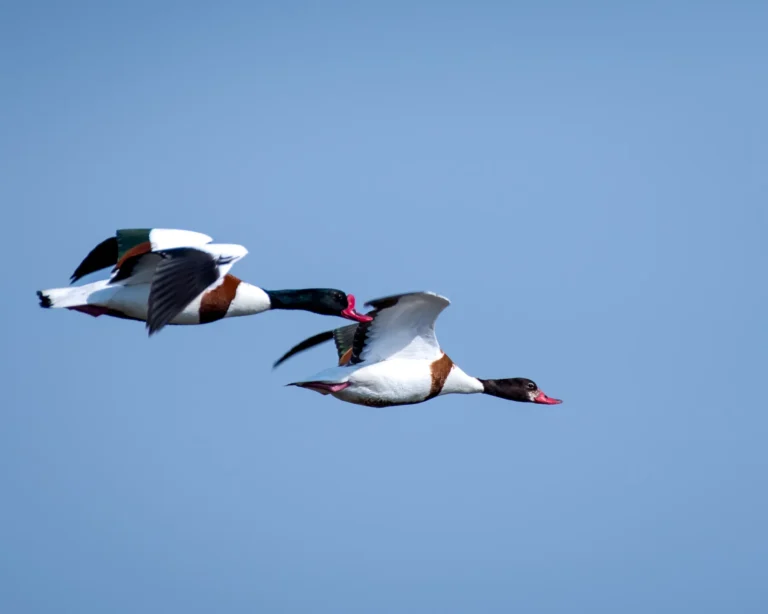
Common shelduck

Description and how to observe Common shelduck:
The Common shelduck, scientifically known as the Tadorna tadorna, is a waterbird impressive in size and colouring. It is distinguished by its contrasting white feathers, with a black band on its breast and head, and a red spot at the base of its beak. It is often seen on the sandy banks and open water areas of the Danube Delta. It is easiest to spot in the early morning or evening, when it prefers to feed or rest on the sandy banks.
What it feeds on Common shelduck:
The Common shelduck has a varied diet, suitable for foraging in soft ground for larvae and invertebrates as well as for crustaceans and molluscs in the water. This diversity in diet makes it adaptable to different aquatic environments.
Threats:
The main threats to the Common shelduck include habitat loss due to wetland drainage and water pollution. Human disturbance and illegal hunting also pose significant risks to the species. Climate change, affecting migration patterns and food availability, is also an emerging challenge to its survival.
Ecological role:
More information about Tadorna tadorna:
The Common shelduck is a protected species in many regions, including the Danube Delta, where it attracts many nature lovers and ornithologists. Conservation efforts include monitoring populations and protecting critical habitats to ensure the future of this iconic species. Observing the white caliper in its natural habitat provides a fascinating insight into the diversity of Romania's wildlife.
Discover now the most beautiful places in the Danube Delta!
In the following pages, you will find detailed information about:
- Top tourist destinations: Traditional villages, nature reserves, tourist trails and much more.
- Activities and attractions: Everything you need to know about boating, fishing, bird watching, cycling and other activities.
- Accommodation and catering: Accommodation to suit all budgets and restaurants serving traditional cuisine.




